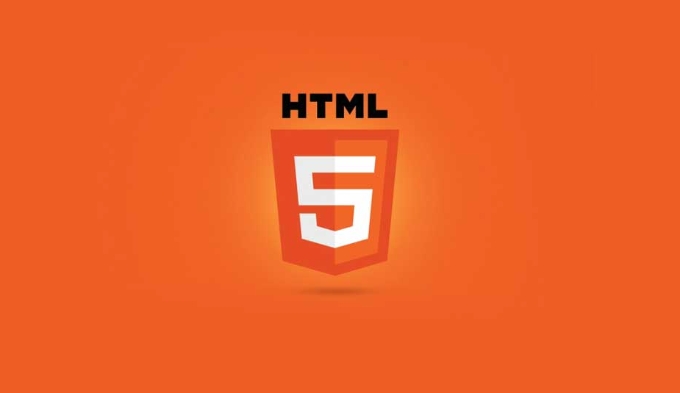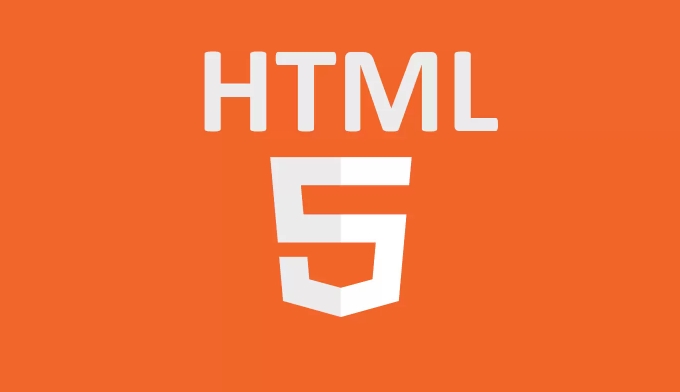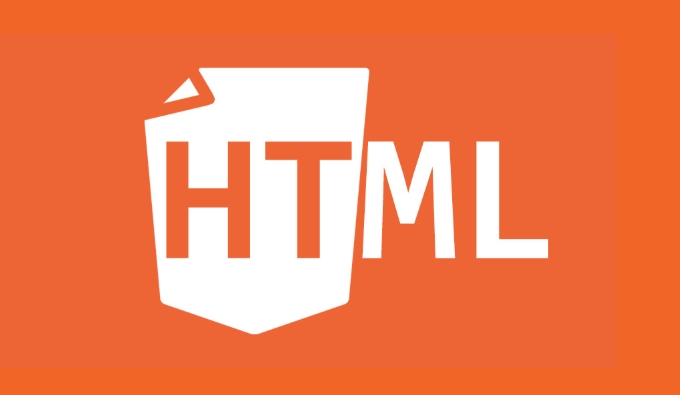Declarative Shadow DOM is a way to directly define Shadow DOM through HTML tags, without the need for dynamic creation in JavaScript; 1. It allows the use of in HTML to directly declare Shadow DOM structure; 2. Improve Hydration performance, reduces JS initialization work because the structure already exists; 3. Isolate styles to take effect earlier to avoid "flash style" problems; 4. Support frameworks such as React 18, Lit, and SolidJS, especially suitable for SSR/SSG scenarios; 5. Pay attention to browser compatibility, construction process adjustment, DevTools debugging differences, and style scope limitations when using it.

H5's Declarative Shadow DOM is a highlight in front-end optimization in recent years, especially in server-side rendering (SSR) and static generation (SSG) scenarios, which provides new ideas for improving the performance of first-screen loading and hydration.

What is Declarative Shadow DOM?
Simply put, Declarative Shadow DOM is a way to define Shadow DOM directly through tags in HTML, without dynamic creation in JavaScript. In the past, to use Shadow DOM, you had to write code similar to element.attachShadow({ mode: 'open' }) , and now you can write it directly in HTML:
<template shadowroot="open"> <style>...</style> <slot></slot> </template>
The browser will automatically mount this template content into a Shadow DOM without running additional JS. This is especially useful for SSR and SEO-friendly frameworks.

Why is it helpful for Hydration performance?
Hydration refers to the process of converting server-side rendered static HTML into dynamic pages with interactive capabilities. Traditional practice requires waiting until JS is loaded and executed before hydrate can be started, while Declarative Shadow DOM reduces the JS workload in this process.
- Advance rendering : The Shadow DOM structure already exists in HTML, and the browser can build a complete DOM tree faster.
- Reduce JS dependency : Component-level Shadow DOM no longer requires JS to initialize, and the hydrate phase is less work.
- Isolated styles take effect earlier : Shadow DOM internal styles will not affect the global situation, and also avoid the "flash style" problem in traditional solutions.
For large applications or low-end devices, these improvements can allow users to see stable, interactive content faster.

Which frameworks support it? How to use it?
Currently, mainstream modern frameworks such as React 18 , Lit , SolidJS , etc. have begun to try to integrate Declarative Shadow DOM support, especially in SSR scenarios.
Taking React as an example, if you use Next.js or RSC (React Server Components), you can output the <template></template> tag with shadowroot attribute on the server and perform lightweight hydrate with client code.
Pay attention to actual use:
- Browser compatibility: Currently, it is mainly supported in the Chromium series browsers, and Safari and Firefox support is still being promoted.
- Construction process adjustment: It may be necessary to modify the packaging tool or server-side rendering logic to ensure the correct structure is output.
- Development and debugging: Shadow DOM is slightly different in DevTools, so you need to get used to its hierarchy.
Small details are worth paying attention to
There are several things that are easy to overlook but critical when using Declarative Shadow DOM:
- The difference between
shadowroot="open"andclosedwill affect whether subsequent JS can access Shadow DOM content. - Slot should be used reasonably to avoid performance degradation due to excessive nesting.
- If you need to do further operations on the client, remember to introduce the necessary scripts in the Shadow DOM instead of putting them outside.
- CSS styles are only valid inside Shadow DOM, so the general style library may need to adapt.
Basically that's it. Although Declarative Shadow DOM is not fully popular, it has shown good potential in improving SSR/SSG application performance, especially suitable for projects that value first-screen experience and interaction speed.
The above is the detailed content of H5 Declarative Shadow DOM for Hydration Performance. For more information, please follow other related articles on the PHP Chinese website!

Hot AI Tools

Undress AI Tool
Undress images for free

Undresser.AI Undress
AI-powered app for creating realistic nude photos

AI Clothes Remover
Online AI tool for removing clothes from photos.

Clothoff.io
AI clothes remover

Video Face Swap
Swap faces in any video effortlessly with our completely free AI face swap tool!

Hot Article

Hot Tools

Notepad++7.3.1
Easy-to-use and free code editor

SublimeText3 Chinese version
Chinese version, very easy to use

Zend Studio 13.0.1
Powerful PHP integrated development environment

Dreamweaver CS6
Visual web development tools

SublimeText3 Mac version
God-level code editing software (SublimeText3)
 Using ARIA attributes with HTML5 semantic elements for accessibility
Jul 07, 2025 am 02:54 AM
Using ARIA attributes with HTML5 semantic elements for accessibility
Jul 07, 2025 am 02:54 AM
The reason why ARIA and HTML5 semantic tags are needed is that although HTML5 semantic elements have accessibility meanings, ARIA can supplement semantics and enhance auxiliary technology recognition capabilities. For example, when legacy browsers lack support, components without native tags (such as modal boxes), and state updates need to be dynamically updated, ARIA provides finer granular control. HTML5 elements such as nav, main, aside correspond to ARIArole by default, and do not need to be added manually unless the default behavior needs to be overridden. The situations where ARIA should be added include: 1. Supplement the missing status information, such as using aria-expanded to represent the button expansion/collapse status; 2. Add semantic roles to non-semantic tags, such as using div role to implement tabs and match them
 Integrating CSS and JavaScript effectively with HTML5 structure.
Jul 12, 2025 am 03:01 AM
Integrating CSS and JavaScript effectively with HTML5 structure.
Jul 12, 2025 am 03:01 AM
HTML5, CSS and JavaScript should be efficiently combined with semantic tags, reasonable loading order and decoupling design. 1. Use HTML5 semantic tags, such as improving structural clarity and maintainability, which is conducive to SEO and barrier-free access; 2. CSS should be placed in, use external files and split by module to avoid inline styles and delayed loading problems; 3. JavaScript is recommended to be introduced in front, and use defer or async to load asynchronously to avoid blocking rendering; 4. Reduce strong dependence between the three, drive behavior through data-* attributes and class name control status, and improve collaboration efficiency through unified naming specifications. These methods can effectively optimize page performance and collaborate with teams.
 HTML5 video not playing in Chrome
Jul 10, 2025 am 11:20 AM
HTML5 video not playing in Chrome
Jul 10, 2025 am 11:20 AM
Common reasons why HTML5 videos don't play in Chrome include format compatibility, autoplay policy, path or MIME type errors, and browser extension interference. 1. Videos should be given priority to using MP4 (H.264) format, or provide multiple tags to adapt to different browsers; 2. Automatic playback requires adding muted attributes or triggering .play() with JavaScript after user interaction; 3. Check whether the file path is correct and ensure that the server is configured with the correct MIME type. Local testing is recommended to use a development server; 4. Ad blocking plug-in or privacy mode may prevent loading, so you can try to disable the plug-in, replace the traceless window or update the browser version to solve the problem.
 Embedding video content using the HTML5 `` tag.
Jul 07, 2025 am 02:47 AM
Embedding video content using the HTML5 `` tag.
Jul 07, 2025 am 02:47 AM
Embed web videos using HTML5 tags, supports multi-format compatibility, custom controls and responsive design. 1. Basic usage: add tags and set src and controls attributes to realize playback functions; 2. Support multi-formats: introduce different formats such as MP4, WebM, Ogg, etc. through tags to improve browser compatibility; 3. Custom appearance and behavior: hide default controls and implement style adjustment and interactive logic through CSS and JavaScript; 4. Pay attention to details: Set muted and autoplay to achieve automatic playback, use preload to control loading strategies, combine width and max-width to achieve responsive layout, and use add subtitles to enhance accessibility.
 Using HTML5 Semantic Elements for Page Structure
Jul 07, 2025 am 02:53 AM
Using HTML5 Semantic Elements for Page Structure
Jul 07, 2025 am 02:53 AM
Using HTML5 semantic tags can improve web structure clarity, accessibility and SEO effects. 1. Semantic tags such as,,,, and make it easier for the machine to understand the page content; 2. Each tag has a clear purpose: used in the top area, wrap navigation links, include core content, display independent articles, group relevant content, place sidebars, and display bottom information; 3. Avoid abuse when using it, ensure that only one per page, avoid excessive nesting, reasonable use and in blocks. Mastering these key points can make the web page structure more standardized and practical.
 Explaining the HTML5 `` vs `` elements.
Jul 12, 2025 am 03:09 AM
Explaining the HTML5 `` vs `` elements.
Jul 12, 2025 am 03:09 AM
It is a block-level element, suitable for layout; it is an inline element, suitable for wrapping text content. 1. Exclusively occupy a line, width, height and margins can be set, which are often used in structural layout; 2. No line breaks, the size is determined by the content, and is suitable for local text styles or dynamic operations; 3. When choosing, it should be judged based on whether the content needs independent space; 4. It cannot be nested and is not suitable for layout; 5. Priority is given to the use of semantic labels to improve structural clarity and accessibility.
 Accessing User Location with HTML5 Geolocation API
Jul 07, 2025 am 02:49 AM
Accessing User Location with HTML5 Geolocation API
Jul 07, 2025 am 02:49 AM
To obtain user location information, you must first obtain authorization. When using HTML5's GeolocationAPI, the first step is to request user permission. If the user refuses or fails to respond, an error should be handled and a prompt should be given; after successful authorization, the Position object includes coords (latitude, longitude, etc.) and timestamp; you can use watchPosition to monitor location changes, but you need to pay attention to performance issues and clear the listener in time. 1. Authorization requires the user to explicitly allow it to trigger the getCurrentPosition method request; 2. Process error.code when rejected or errored and prompt the user; 3. After success, position.coords provides location data; 4.watc
 Saving the content of an HTML5 canvas as an image.
Jul 08, 2025 am 02:13 AM
Saving the content of an HTML5 canvas as an image.
Jul 08, 2025 am 02:13 AM
Yes, you can save its contents as an image using the HTML5Canvas built-in toDataURL() method. First, call canvas.toDataURL ('image/png') to convert the canvas content to a base64 string in PNG format; if JPEG or WebP format is required, the corresponding type and quality parameters such as canvas.toDataURL ('image/jpeg', 0.8) can be passed in. Then you can achieve download by creating a dynamic link and triggering a click event: 1. Create an element a; 2. Set the download attribute and href as image data; 3. Call the click() method. Note that this operation should be triggered by user interaction.






